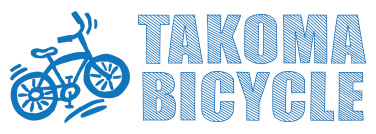The Golden Rule
You grab your bike and head to the trail for a little peace and serenity. However, there are probably at least a few other people who have the same idea. Consequently, it's just as important to know the rules of the trail as it is to know the rules of the road when you hop in your car. A disregard or unfamiliarity with trail rules can lead to damage to trails, as well as injury to yourself and/or others. Adhering to the proper etiquette not only ensures the safety of others, but it also makes sure bikers are still permitted on the trails. Bad behavior can result in bad consequences.
The Basics
The basic set of trail guidelines is set by the International Mountain Bike Association and is accepted worldwide. Wherever you ride, keep the following in mind.
- Ride Open Trails: Respect trail and road closures — ask a land manager for clarification if you are uncertain about the status of a trail. Do not trespass on private land. Obtain permits or other authorization as required. Be aware that bicycles are not permitted in areas protected as state or federal Wilderness.
- Leave No Trace: Be sensitive to the dirt beneath you. Wet and muddy trails are more vulnerable to damage than dry ones. When the trail is soft, consider other riding options. This also means staying on existing trails and not creating new ones. Don’t cut switchbacks. Be sure to pack out at least as much as you pack in.
- Control Your Bicycle: Inattention for even a moment could put yourself and others at risk. Obey all bicycle speed regulations and recommendations, and ride within your limits.
- Yield Appropriately: Do your utmost to let your fellow trail users know you’re coming — a friendly greeting or bell ring are good methods. Try to anticipate other trail users as you ride around corners. Bicyclists should yield to other non-motorized trail users, unless the trail is clearly signed for bike-only travel. Bicyclists traveling downhill should yield to ones headed uphill, unless the trail is clearly signed for one-way or downhill-only traffic. In general, strive to make each pass a safe and courteous one.
- Never Scare Animals: Animals are easily startled by an unannounced approach, a sudden movement, or a loud noise. Give animals enough room and time to adjust to you. When passing horses, use special care and follow directions from the horseback riders (ask if uncertain). Running cattle and disturbing wildlife are serious offenses.
- Plan Ahead: Know your equipment, your ability, and the area in which you are riding, and prepare accordingly. Strive to be self-sufficient: keep your equipment in good repair and carry necessary supplies for changes in weather or other conditions. Always wear a helmet and appropriate safety gear.
Additional Recommendations
In addition to the formal recommendations above, there are a few additions/clarifications often appreciated on the trail.
- Up or down: The general rule is for downhill riders to yield to uphill. The reason for this is the amount of exertion an uphill climber is putting out - it's a lot harder for that person to stop and start again, whereas the downhill rider will quickly regain his momentum. However, if you as an uphill rider don't mind a short little breather, or see a downhill rider "in the groove," it is perfectly acceptable to pull off to let the downhill rider pass.
- Pedestrians in the path: As a cyclist you should always yield to those on foot. However, hikers are often wary of cyclists and will step to the side. There's no need in this instance to stop and insist the hiker pass. However, a friendly "thanks!" or "enjoy your hike!" will go a long way towards hiker/biker relations. If you're riding in a group, it's also helpful to let the hiker know how many bikes to expect behind you - i.e. "three behind me!" This will prevent the hiker from stepping back on the trail, only to feel like he needs to step off less than a minute later.
- Take advantage of local knowledge: If you're riding on a new trail, try to canvas local knowledge of it. Some trails may not be marked as uni-directional, but have evolved to such over time. There may also be specific tips and tricks. Talk to locals or check out websites like singletracks.com for trail info.
- Be kind to slower riders: You love mountain biking - help new riders love it too by being kind to slower riders. Don't buzz someone's rear tire. Many sections of trail are too narrow to pass. If so, be patient riding behind a slower rider and wait until the trail widens. At that point, politely ask "Can I pass you in 20 yards?" This bit of warning can help avoid unnecessary collisions.
- Don't avoid puddles: Instead of riding around puddles (and unwittingly widening the trail and causing damage to the surrounding landscape), invest in a good pair of fenders. The right set of fenders can prevent that mud stripe down your back, even if you ride right down the middle of the puddle.



